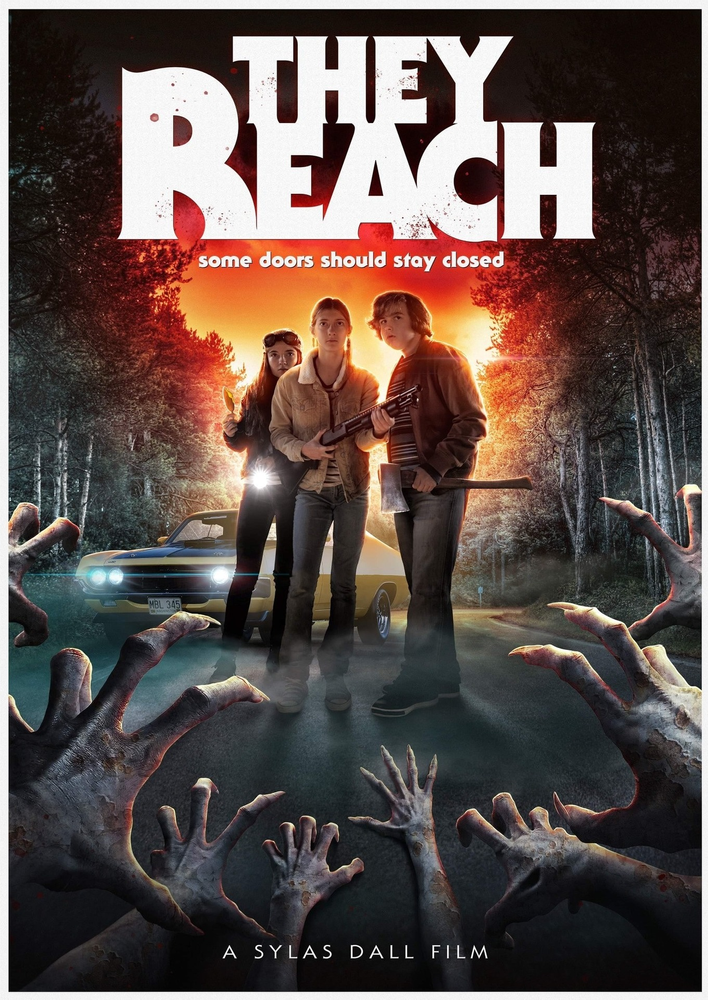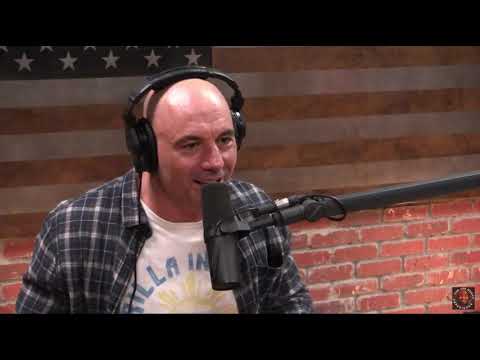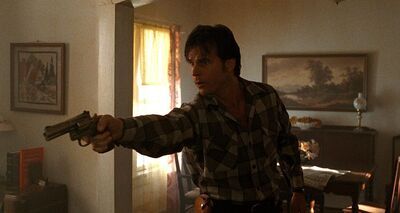‘The Crow: City of Angels’ Remains a Sorry, Stupefying Sequel
A bad sequel feels like an act of betrayal.
The question isn’t ‘why did they make this (the obvious answer — money)’ but, ‘how could they make something so rotten?’
It’s been 25 years but I’m still smarting over Tim Pope’s “The Crow: City of Angels,” easily one of the most shallow, under-cooked and all-out insulting sequels ever concocted.
Adding further insult is that anyone thought the original “The Crow” (1994), a groundbreaking, R-rated graphic novel adaptation with a deeply troubled production history, even needed a follow-up.
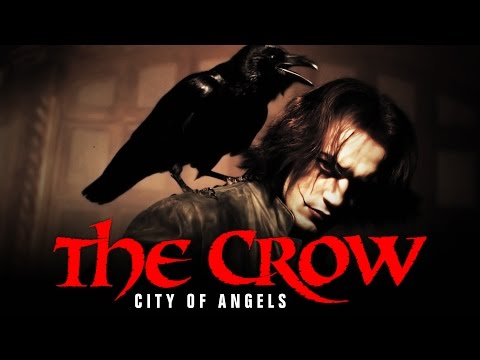
For the uninitiated, “The Crow” starred the late Brandon Lee as Eric Draven, a musician who is murdered alongside his wife by a gang, who rape and murder her and shoot him in front of her. A year later, a supernatural crow appears, allowing Draven to literally rise from the grave and seek revenge on each of his attackers.
An accident during filming, involving an improperly loaded prop gun, resulted in Lee dying on the set. The film was temporarily shelved, though it was decided that, in honor of Lee, the film should be finished.
“The Crow” was inherited from Paramount Pictures to Miramax, where (through use of CGI and doubles), the remaining shots were completed. When it was finally released in the spring of ’94, it was a surprise blockbuster, proof that comic book movies weren’t just for children. “The Crow” was a groundbreaking work of visual innovation, a frank depiction of despair and loss that fit its tragic production and a fine showcase for its dynamic star, who gave a performance of startling intensity and feeling.
If only Miramax could have walked away, as “The Crow” never needed to be a franchise.
RELATED: Is ‘Caddyshack II’ the Worst Sequel… ever?
At the top of “The Crow: City of Angels,” Ashe (Vincent Perez) and his son are murdered by a gang of vile criminals. A supernatural crow and Sarah (Mia Kirschner) oversee a resurrection in which Ashe is once again alive, invincible and able to exact revenge on the gang that took his life away. The plot is nearly identical, except that almost nothing works.
“The Crow: City of Angels” is a merchandise roll-out in search of a movie. The Hot Topic T-shirts and CD soundtrack are far more inspired than the movie they’re pushing.
The anguish and horror of James O’Barr’s original 1989 graphic novel found its voice in Alex Proyas’ 1994 surprise hit. Here, the despicable crime that motivates Ashe on his mission of vengeance has a murky presentation, the character takes too many long pauses in between some of his stalk n’ kill sequences and, aside from Sarah, there isn’t a soul on screen to root for.
A key problem is front and center — while we’re apparently watching Kirschner play a grownup version of the character Sarah from the first film, no mention is made of the original. Perhaps the idea was to make a stand-alone film, though nothing here (the visual presentation, pacing, characters, etc.) feel like they exist in the same world as the 1994 film.
Considering the artistic and monetary success of Proyas’ “The Crow,” there was inevitably going to be “The Crow 2,” but no one involved found a way to justify moving beyond Lee’s still-impressive final performance or find a story worth telling.
It’s hard to imagine what anyone was thinking in casting Perez in the role of Ashe.
His capable breakout role in “Queen Margot” (1994) was a stand-out, but not an indication that he could carry a movie as a lead, let alone an American film in which, like it or not, he’s going to be compared to Brandon Lee’s iconic performance.
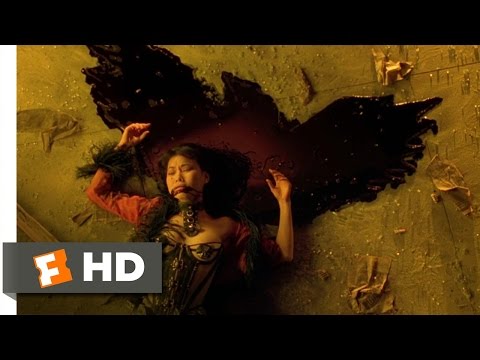
Perez is atrocious, audibly struggling with the dialogue but overdoing the emotions so much, his work becomes unintentionally hilarious at all the wrong moments.
Movie critics were hard on supermodel Cindy Crawford for playing a lawyer and making a high profile bid at a screen career in “Fair Game” the year before. Crawford’s work is, in comparison, far more capable and less embarrassing.
Perez loves to hug his shoulders during some emotional moments and has a tendency to break stuff to convey inner feeling. Witnessing Perez expressing Ashe’s fury over the loss of his son by repeatedly kicking a car is up there with Tommy Wiseau’s outbursts in “The Room.”
The inevitable comparison to Lee doesn’t help, but here’s another indication they cast the wrong man in the lead. In addition to his startling intensity, physical prowess and ability to shift gears emotionally, Lee was downright scary as Eric Draven. Perez resembles a gaunt Brendan Fraser in clown make-up, and he visibly lacks training with fight choreography.
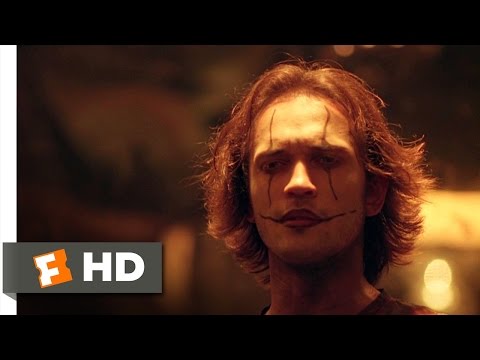
Giving a performance almost as cringe-worthy is Richard Brooks, playing the main villain. He’s a poor substitute for Michael Wincott’s disturbing turn in the original and has a way of making each of his haughty line readings sound like a bad high school play rendering of Shakespeare. Remarkably, Brooks (unlike Perez, who never made a film in the U.S. again) survived this experience and became a member of the great ensemble cast of “Firefly.”
The very-few grace notes are Kirschner’s arresting performance — between this and her turn in “The Black Dahlia,” she clearly needs a great film to anchor on her own. The songs on the soundtrack are good (specifically Filter’s agreeably noisy “Jurassitol” and White Zombie’s playful redux of “I’m Your Boogeyman”) but are poorly showcased in the film (unlike the original, which found lengthy and fitting scenes to crank up the volume).
There’s the occasional cool image (like Ashe’s free fall off the side of a building) but the art direction can only do so much. Pope has a long history of directing some of the most widely viewed music videos in MTV history (including the most famous from Talk Talk, The Cure, Soft Cell and Men Without Hats). That aesthetic doesn’t cut it here.
There’s lots of slow motion, intentional blurs and shaky cam, image overlaps, unmotivated fades and other very late ’90s camera tricks that only render the action incomprehensible.
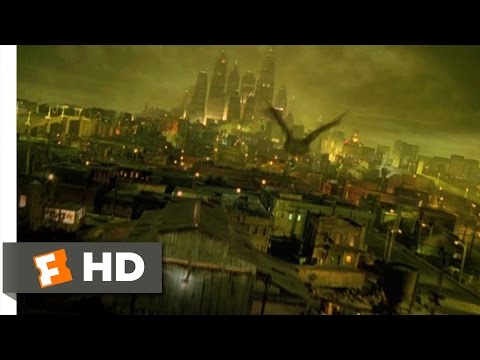
A key villain dies from a swarm of crows swooping down and devouring him — the way this plays out, you see the birds hurl themselves into the bad guy and it becomes a computer-generated dark blur, until he vanishes.
A similar and far superior scene pops up in “The Dark Half,” which bears mentioning. How is it that Pope’s film, which has almost the same budget as George A. Romero’s “The Dark Half” (released in 1993 but shot in 1991), can’t come close to matching a practical effect from a movie made five years earlier?
“The Crow: City of Angels” bombarded fans with its soundtrack and cool T-shirts, finding its way to a no. 1 opening, before word of mouth sent it crashing to the ground. You’d think Miramax would walk away but no — the limp 2000 “The Crow: Salvation” (starring Eric Mabius and an unfortunate Kirsten Dunst) was followed by the far more idiotic 2005 “The Crow: Wicked Prayer” (starring Edward Furlong and Tara Reid), both straight to videocassette releases.
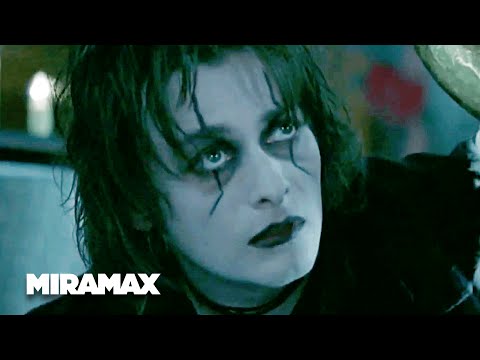
Mark Dacascos actually had the nerve to take on the role of Eric Draven for “The Crow: Stairway to Heaven,” a woeful TV series that lasted a single season. The past decade has been full of reports that a new version of “The Crow” was in the works, with everyone from Bradley Cooper to Jason Momoa accepting, then stepping away from, the project.
File this next to “The Sting II” and “Curse of the Pink Panther.” If you can’t fill the void of an exemplary leading performance or construct a second chapter that further builds on an open-ended narrative, then don’t bother.
Pope has stated that “The Crow: City of Angels” was taken away from him and recut against his wishes, therefore making him disown the entire thing. Fine, except I’ve seen the varying theatrical and “Director’s Cut” and have read the long list of deleted scenes from the (imaginably unwatchable) 160-minute first cut.
This is an easy call to make — the terrible acting, lousy dialog and nonsensical plotting are enough to demonstrate that, no matter the length, this “Crow” was always going to end up a turkey.
The post ‘The Crow: City of Angels’ Remains a Sorry, Stupefying Sequel appeared first on Hollywood in Toto.
